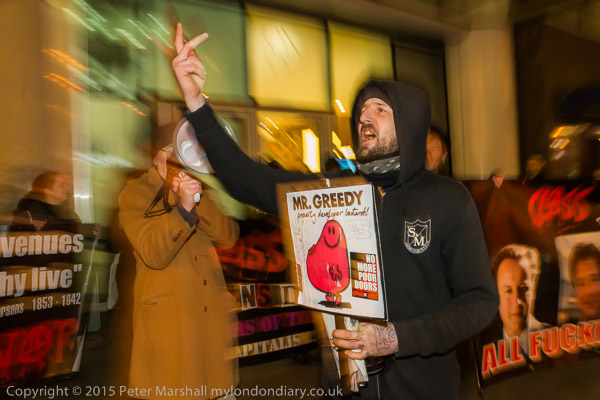
Last year I photographed around 20 protests by Class War outside a prestige block just to the east of the City of London, called One Commercial St. The recently built block contains a supermarket, a betting shop, a hotel, an entrance to Aldgate East Underground station and more, including car parking and both expensive private flats and some managed as social housing by a housing association.
Class War started their protests at the end of last July, and kept them up weekly – with the occasional extra special event until almost the end of November. Like many others they were appalled by finding out that while the residents in the privately owned flats had a posh entrance on the main street – Whitechapel High Street – into a comfortable lounge area with a 24 hour staffed reception desk, those in the social housing had to go down a dirty and dimly lit alley at one side of the block to a door with a card entry system into a long blank corridor with just a block of mail boxes. When I first went down it, the alley was strewn with rubbish and smelt strongly of urine. Because the entry system was broken, the door to the block was not locked and anyone could walk in off the street. Apparently too, there had been problems with getting repairs to the lift, and the flats are up on the 10th floor and above.
Increasingly this kind of social segregation is being built into new blocks where the developers are forced to include some element of social housing, and the protests by Class War are just one of several that have served to bring this to public attention and fairly wholesale public condemnation. It reeks of the separate entrances for servants and workmen that have now largely disappeared from houses and workplaces. Most feel there is no place for separate doors for rich and poor in our country today.
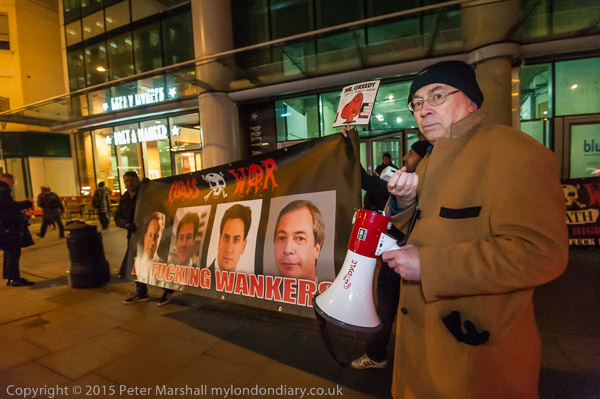
Its also a part of a larger movement over housing, particularly in London, where former working-class estates and areas are increasingly are subject to a so-called ‘regeneration’, which involves evicting the working class tenants and lease-holders, and either demolishing and rebuilding or refurbishing the properties for sale or letting at ‘market rents’. Many of those buying these properties are overseas investors who may not even live in them, instead seeing a good return on their investment as London house prices continue to rise – particularly in places such as One Commercial St, close to the Crossrail development. Investors are told they can expect a 35% price increase by the time Crossrail opens in around three years.
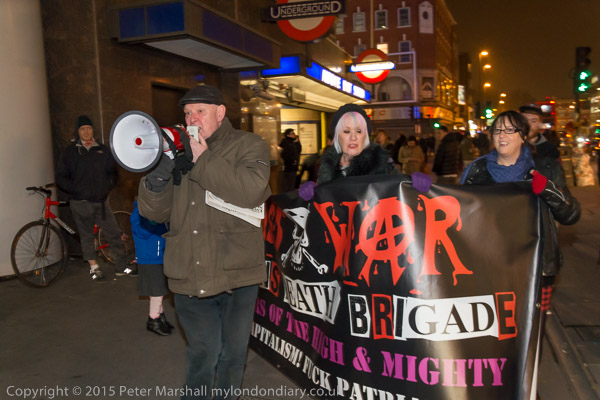
Local residents – both those whose families have lived in the area for generations and more recent migrants to the area – cannot afford either the market rents or the so-called ‘affordable rents’ which are often around 80% of the market rate.
The process of regeneration was started, perhaps with good intentions, by the Labour government in the 1990s, but was poorly thought out – and the developers have managed to run rings around even the best intentioned councils. But most London councils have colluded with the developers – and often led the process of getting rid of their less well-off residents.

In November, the flats were sold by developers Redrow to Taylor McWilliams, and the new owner contacted Class War and offered talks to try an solve the problem. It seemed to me that relatively minor interior building works could have allowed all tenants to use the front entrance. I’d walked inside the block between the two sides myself, between separate lifts on the ground floor of the building when I was given a tour by one of the owners of a flat on the rich side. Class War were hopeful of a satisfactory settlement.
The meeting, when it came, was a shock. McWilliams told Class War he wasn’t prepared to make a single entrance so that everyone could enter from the front street. Complete intransigence. Class War told him what they thought and announced the protests would re-commence. They started with a short detour from the March for Homes at the end of January as it was going past the building, but the protests began again properly on 12th February, and are continuing every Thursday evening, from 6-7pm.
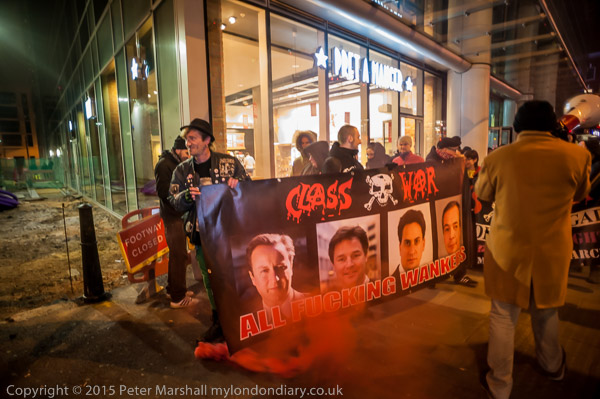
Like Class War, I was very disappointed by the response, and also as a photographer, covering a regular protest like this presents problems. How do you keep going back to the same place – and largely the same people – and making pictures that remain fresh?
There have been some minor changes. As you can see when the protesters returned there was building work taking place in the alley, and it is now rather more pleasant, and what was stygian is now well lit.
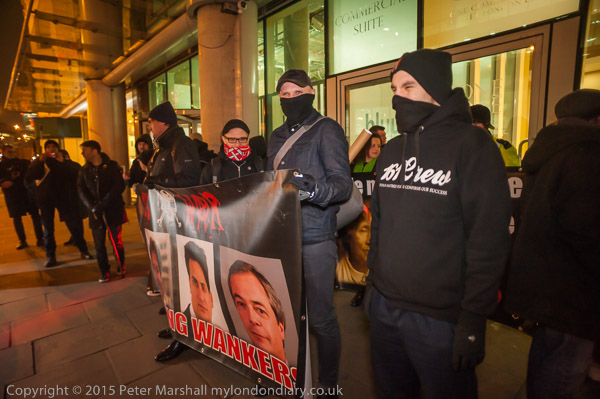
There are also some new protesters – with various groups including the 161 crew of Polish anti-fascists shown here holding what I euphemistically call Class War’s ‘Political Leaders‘ banner. More about this banner in a later post, but while it is certainly in bad taste, most people seem to have a very positive reaction to it, often pointing and laughing. It’s certainly meant be and is provocative.
Class War does inject a certain amount of fun into politics, dealing with serious issues, but doing so in a theatrical way. But although I quite enjoy going to their protests, trying to cover them every week is sometimes difficult. I don’t really like working in the dark either, having to use flash or other artificial lighting much of the time. Even on a reasonably well-lit street parts of the pavement are pretty dark. I’ve started using a LED light with the D700 (not least because it is now totally unpredictable with flash, suffering from old age) but that certainly has its limitations, and even at ISO3200 many images are blurred by subject movement. Again this is something I’m still not quite sure what I think about, but I will try and write more about later. Sometimes I seem to get some good results.
This is a project I’ve committed a great deal of time to and I hope to see it out.
More at Poor Doors Truce Over – It’s War! and of course in the following weeks.
______________________________________________________
My London Diary : Buildings of London : River Lea/Lee Valley : London’s Industrial Heritage
All photographs on this and my other sites, unless otherwise stated, are taken by and copyright of Peter Marshall, and are available for reproduction or can be bought as prints.
To order prints or reproduce images
________________________________________________________